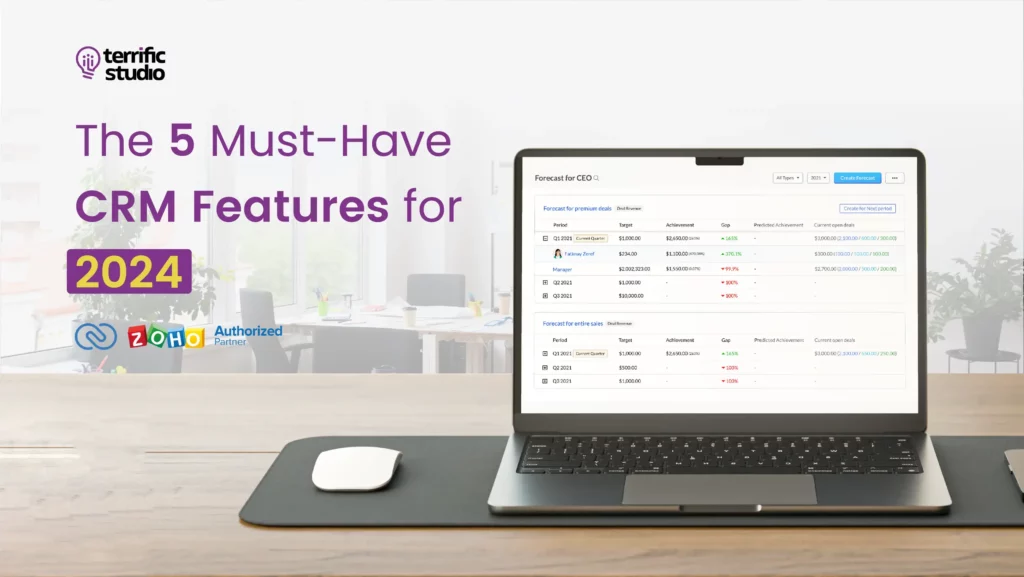But what is product-market fit?
Why Having A Product Market Fit Is Important?
Your business succeeds better with the proper product-market fit and an excellent product with high market demand. With a product perfectly tailored to the market, you can bring innovative solutions that change how you do business and become a significant success. An efficient product-market fit and strong customer demand are essential in generating revenues and allowing your business to develop organic search and referral marketing that expands your customer base and optimises growth.
An interesting example is ZOHO – a Software As A Service (SaaS) platform that features marketing, productivity, and collaboration tools. It achieved product-market fit by providing a budget – friendly cost that lets you run your entire business. Zoho’s market fit competes based on its ability to deliver high-quality products that entice customers and foster brand loyalty over time. As a result, Zoho can devote resources to problems that their competitors would not.
Risks Of Not Having A Product Market Fit
- Increase chance of failure. – The absence of a product – market fit in your startup increases the chances of a failed business. Achieving a working market – fit is essential for business success, regardless of how successful it may already appear. It’s essential to ensure there’s a good match between what your product and the needs of your target market.
As your startup grows, customers and potential investors will need clear evidence there is a working market fit with minimised risks. Once this is unavailable, your business is at a greater risk of losing customers and investors, as no one wants to be associated with non-revenue generating startups.
- Declining Revenue – Without a working product – market fit, your startup could suffer declining revenue and fail to maintain market stand. A good example of this is Vine, a video hosting social media platform, similar to TikTok, where users could create a six-second looping video for entertainment. In 2017, they shutdown due to their inability to test monetization options, resulting in a lack of revenue.
- Inability to remain competitive – Another risk with not having product-market fit is your business’s inability to remain competitive in the marketplace. You need a good understanding of current trends and demands, so your products can meet them; without this insight you risk offering innovative solutions that stand out against the competition.
- Inability to expand – Failing to have product-market fit can make it difficult for your business to expand. Any attempts at entering a new market without properly identifying customer needs in the old one could fail.
How To Find The Right Product - Market Fit

Product – market fit is not one-size-fits-all; it varies from business to business. It is not a one-time thing; as the market changes, it is also expected to change. A perfect example is Instagram; the popular social media platform started as a location – based social network that lets you plan future check- ins and post pictures of meetups. However, in response to user feedback and market shifts, they pivoted into photo-sharing application but have since evolved into a platform many businesses use.
For a startup or SME to succeed, ensure that your product helps solve an existing problem and places customer retention and satisfaction at the forefront. The more you know about your customers and the market, the more likely you are to find the right fit.
If you want to achieve product-market fit, you should be asking these questions to help you better position.
- Who is my target audience?
This answers questions such as, “Who will buy?” and “What are their wants/needs?” - What benefit does my product provide?
For example, If you are an EdTech company in a specific region, make sure you offer some advantages and benefits over the existing EdTechs in the market. - How can we improve to best meet audience needs?
Develop a plan to reach out and communicate with potential customers so they can learn about your product.
After you determine answers to these questions, we recommend taking these significant steps to help find the right product-market fit.

- Research your market and target audience:
Identifying gaps in the market, creating customer personas, and developing user journeys all contribute to your product-market fit, providing potential users with a clearer understanding of your product and why they should use it. - Always research competitors:
No matter the size and form of your business, there will always be competition, hence it is important not to assume that you don’t have any competitors. It is necessary to evaluate the industry, look at direct and indirect competitors, look at their products, and determine their pricing strategies. - Define value propositions:
Value propositions are all the benefits your product offers. Assessing your products’ benefits, features, use cases, different customer experience and understanding what makes your product unique from others creates an accurate definition of your product’s value proposition. - Validate your MVP:
MVP stands for Minimum Viable Product. It is a way to evaluate a product continuously and its features. When you have the MVP, test it in the market, ask for feedback, compare it to competitors’ products, and be ready to take note of ways to improve its features, designs, and functions. - Make room for change:
As we all know, change is constant and the market is ever-evolving. Therefore, at Terrific Studio, we advise that you have an open feedback loop to keep up with the changes in your market.
If you are at this point, we believe you have successfully understood the concept of product-market fit, the risks when you do not have it, and the significance.
At Terrific Studio, we encourage businesses to make product-market fit a necessity, and measure its success. There is no unique way to measure this, but we recommend these metrics to make sure you found the right fit.
- Customer Lifetime Value (CLV) – This is the amount of money a customer spends on your product. It is our most recommended metric as it defines/determines the growth of your business.
- Net Promoter Score (NPS) – This measures the customer experience and predicts business growth.
- Growth Rate – This is directly related to demand, it quantifies rise in product demand in a market.
- Churn & Bounce Rate – This is the rate customers stop doing business with you. As you grow your startup, Terrific Studio will help you create a marketable product that unlocks growth and drives success, while also meeting the needs of your customers. This will help reduce the churn rate your business experiences.
You may be wondering, “How?”
We use a systematic iteration and idea validation approach to help businesses reach their goals. We don’t stop here; we consider the risks, as these are the easiest ways to miss out in the market quickly. For businesses with existing strategies, we evaluate the riskiest elements, and select the best fail-safe strategies. This way, they can identify the needs of underserved customers and properly define their value proposition.
If you will like to know how Terrific Studio can help your business achieve or refine your product – market fit, BOOK A FREE CALL with us NOW.








